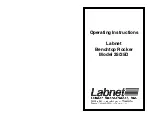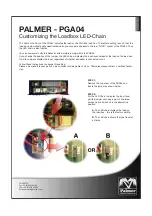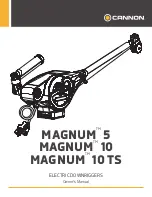
Figure 5.1: Vessel Mounting Of Three Baseline Transducers
Transducer #1 is mounted at the stern port side, #2 is located forward and #3 sits at the stern,
starboard side. Transducers #1 and #2 should have the greater separation and form the main
baseline. For standardization purposes, transducer #3 should always be to the right of the imaginary
line starting at transducer #1 and extending towards transducer #2. The angle between the
Transducer #1-#2 and Transducer #1-#3 baseline will ideally be close to 90 degrees. It should never
approach either zero degrees or 180 degrees. If the three transducers are employed in something
approximating a straight line, PILOT will not be able to determine if the ROV is located to the left or
the right of that line. The length of the baselines relates directly to the accuracy of the ROV direction
provided by PILOT. If the baseline is 3 meters long, the direction reading will be accurate to about
+/- 5 degrees. If the transducer spacing is 30 meters, the direction accuracy will be about +/- 0.5
degrees. On most ship operations, the #1-#2 baseline will be longer than the #1-#3 baseline. In such
cases, tracking accuracy will be better broadside to the #1-#2 baseline (broadside to the surface
vessel). The accuracy of the ROV distance and depth reading is independent of the surface station
transducer separation distance. Distance accuracy is very precise, typically about +/- 0.15 meters.
The depth accuracy depends on the sensitivity of the depth sensor in the ROV transponder. It is
about +/- 1% of the maximum depth rating of the ROV transponder, which is indicated on the
transponder label.













































